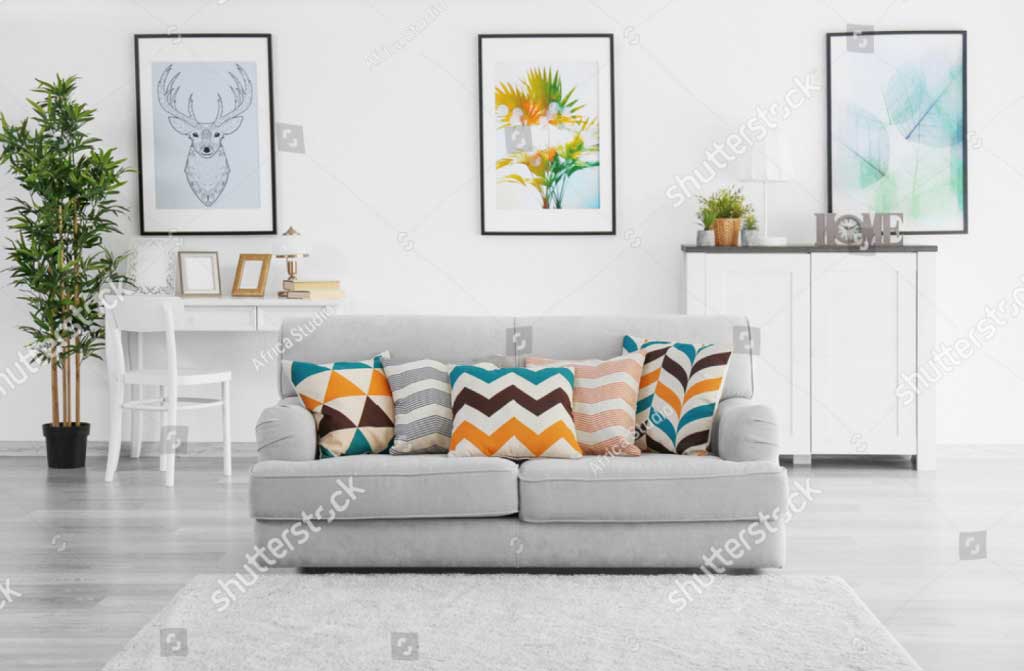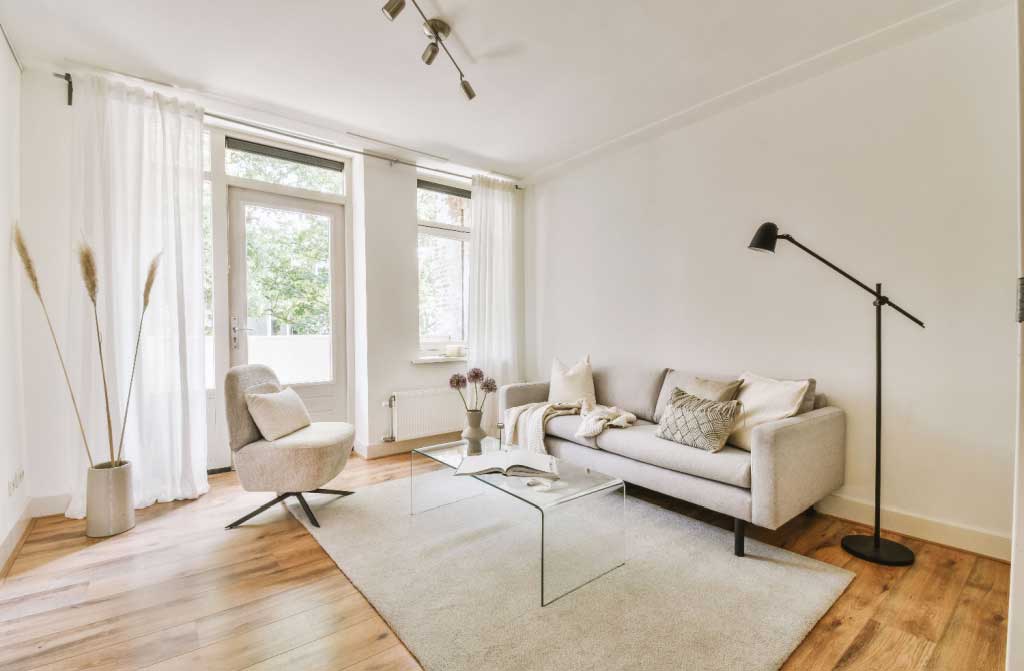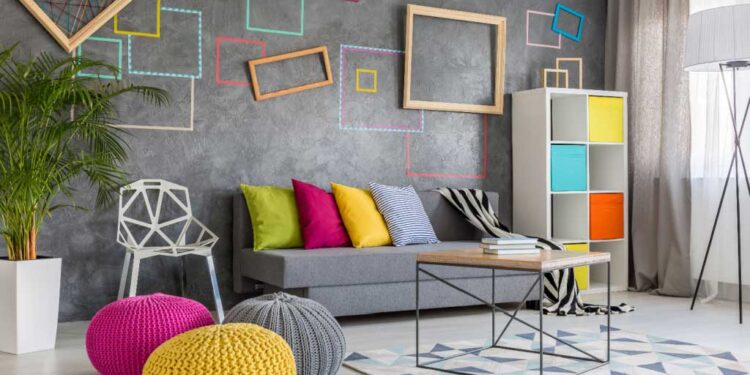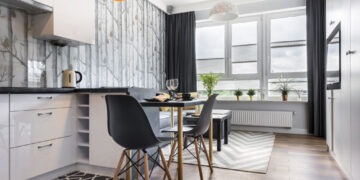Your home is a reflection of who you are, and the colors you choose to decorate it with can have a significant impact on the overall vibe and personality of your space. That’s why it’s essential to understand the power of color and how to choose a color palette that reflects your home’s unique personality.
Selecting a color palette may seem daunting, but with a bit of guidance, you can create a cohesive and inviting space that genuinely feels like home. Whether starting from scratch or looking to refresh your current decor, knowing how to choose a color palette for your home can make all the difference.
In this article, we’ll explore the ins and outs of how to choose a color palette that reflects your home’s personality and provide tips and tricks for selecting colors that work together harmoniously. Get ready to discover the power of color and transform your home into a space that truly feels like you.
How to choose a color palette for your home

First, let’s talk about the power of color.
Color has a significant impact on our emotions, mood, and behavior. It can affect the perception of a room’s size, shape, and lighting. Therefore, knowing how to choose a color palette that reflects your personality and creates a comfortable and inviting atmosphere is essential. Here are the steps to take when choosing a color palette for your home.
Determine the mood and function
Before selecting a color palette for the house interior, it’s essential to identify the room’s purpose. Is it a bedroom, a living room, a home office, or a dining area? Each space has its function and mood. For instance, a bedroom should be a calming and relaxing space, while a living room can be more vibrant and energetic. Plenty of affordable living room ideas exist, so you can pick the one that best suits your needs.
The next step is determining the style and atmosphere you want to create in the room. Do you prefer a traditional, modern, or eclectic style? Do you want a cozy, intimate space or an open, airy one? The style and atmosphere you choose will help you guide your color choices.
Evaluate the existing layout

The power of color is undeniable. It can transform a dull, lifeless space into a vibrant, energizing one. However, knowing how to choose a color palette lies in understanding the room’s existing layout.
Take a look at the furniture, artwork, and decor pieces in your space. Consider their colors and how they complement or clash with each other.
For example, you don’t want your walls to clash with your sofa or artwork. Also, when refreshing your home with a new color palette, you probably don’t want to invest in new furniture, so selecting a color scheme that matches the existing furniture is essential.
Estimate the natural light

One of the most important factors to consider when creating a color palette for your home is the natural light in the room. Natural light can influence a space’s overall look and feel and make or break your color choices.
The room’s orientation is vital in determining the amount of natural light it receives.
Rooms that face north tend to have cooler, softer light, while rooms that face south tend to have a warmer, brighter light. East-facing rooms receive plenty of morning sunlight, while west-facing rooms have a warm glow in the late afternoon. Make a note of the room’s orientation and the time of day when it receives the most natural light.
Windows are the primary source of natural light in any room. Assess the size, number, and placement of windows. Large windows that face south or west tend to let in more light than small windows or those facing north.
The surrounding of a room can also affect the quality and quantity of natural light it receives. If there are tall trees or buildings outside the windows, they may block or filter the light. If light-color walls or reflective surfaces surround the room, it can amplify the amount of natural light.
Consider the color wheel and the psychology of color

A critical step in choosing a color palette is to understand the basics of the color wheel. A color wheel is a tool used to organize colors based on their relationship to one another. There are three primary colors: red, yellow, and blue. These colors cannot be created by mixing other colors. Secondary colors are created by combining two primary colors: green (blue and yellow), orange (red and yellow), and purple (blue and red). Tertiary colors are created by mixing a primary color with a secondary color.
Once you understand the basics of the color wheel, it’s time to consider the psychology of color. Different colors can evoke different emotions and moods, making them a powerful tool in interior design. For example, red is the color of passion, vigor, and thrill, while blue reflects tranquility, enjoyment, and serenity. Green is associated with nature, growth, and balance, while yellow is associated with happiness, optimism, and warmth. By understanding the psychology of color, you can choose colors that will help create the mood and atmosphere you want in your home.
When selecting a color palette for your home, it’s essential to consider both the colors you like and the colors that will work well together. A good rule of thumb is to choose a dominant color, a secondary color, and an accent color. The dominant color should be the room’s primary color, such as the color of the walls or the furniture. The secondary color should complement the dominant color, while the accent color should provide a pop of color and add visual interest.
Explore the color trends for 2023

When thinking about how to choose a color palette for your home, a great source of inspiration might be the year’s current trends.
This year, we see a shift toward bold and vibrant hues. It’s no wonder Viva Magenta was selected as the color of the year 2023. But also think about deep greens, warm terracotta, and bright yellows. These colors can be incorporated into your home in various ways, whether through a statement wall, a piece of furniture, or accent decor.
But it’s important to remember that color trends come and go. So, when choosing your color palette, consider the overall vibe you want to create in your home.
Ultimately, the key to selecting a color palette for your home is to find the balance between trendy and timeless. Explore the color trends for 2023, but don’t be afraid to mix and match them with classic hues that will stand the test of time.
Consider hiring a professional interior designer
If you want to make sure you are choosing the suitable color scheme for your home and the colors you select match the existing layout and furniture, but you are feeling a little bit uninspired, consider hiring a professional interior designer.
Hiring a professional interior designer is a smart choice when selecting a color palette. They have the experience and knowledge to guide you in choosing the colors that reflect your home’s personality while complementing furnishings and decor. A professional designer will work closely with you to understand your personal style, preferences, and vision for your home.
Final thoughts
Choosing a color palette that reflects your home’s personality is an important decision that can significantly impact your living space. By understanding how to choose a color palette and the power of color, you can create a home that feels authentic and personalized to you. Whether you opt for bold and bright hues or subdued and calming tones, the key is to select colors that evoke emotions and capture the essence of your style. So don’t be afraid to experiment with different shades, textures, and patterns until you find the perfect color combination that truly speaks to you. With the right color palette, your home will reflect your unique personality and style for years to come.











